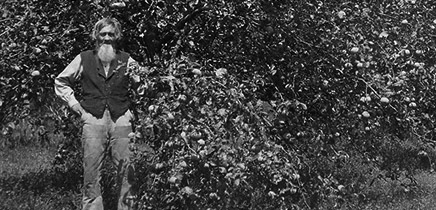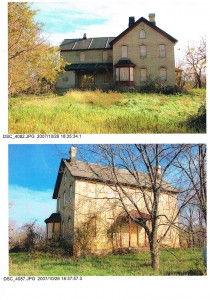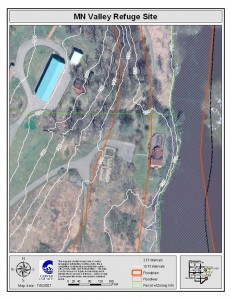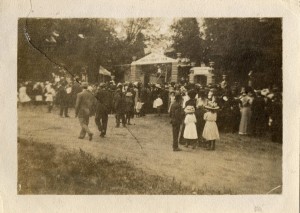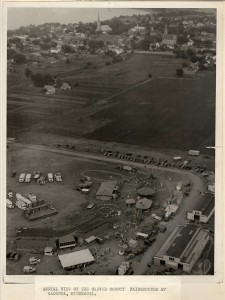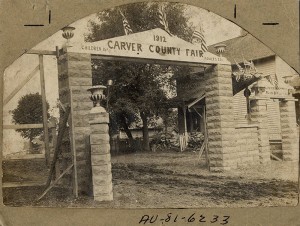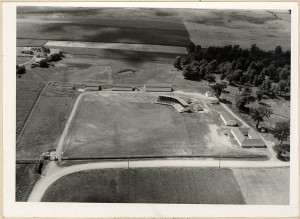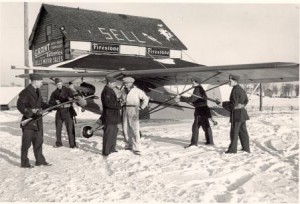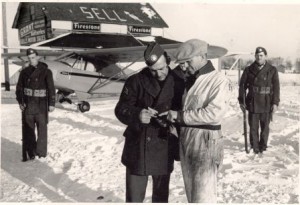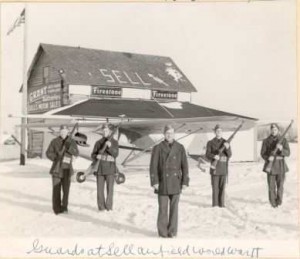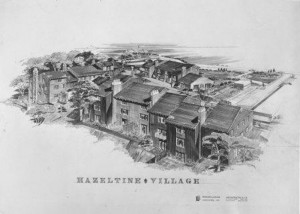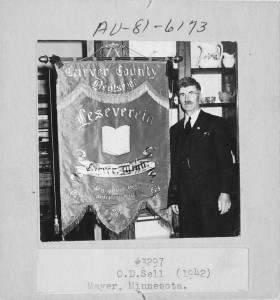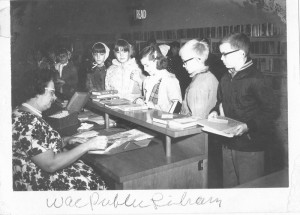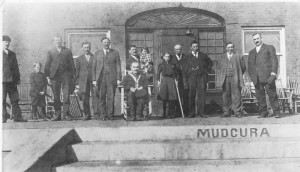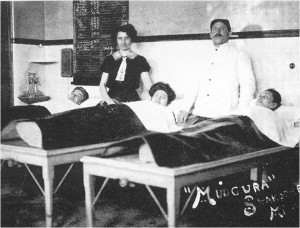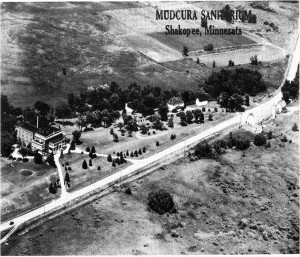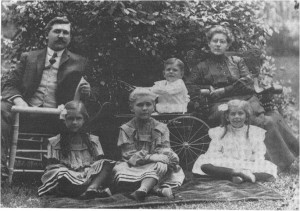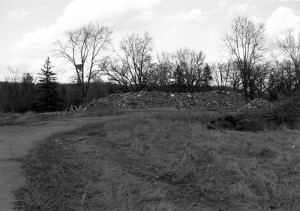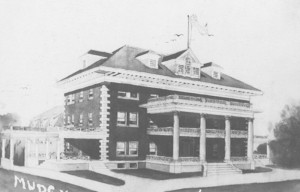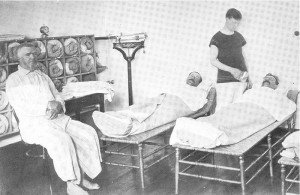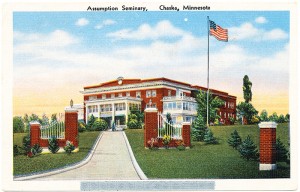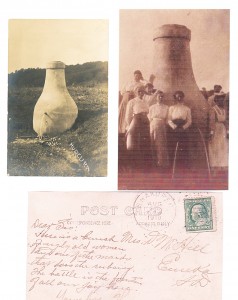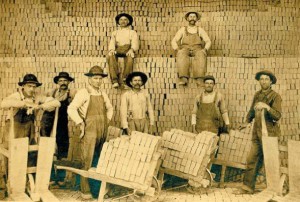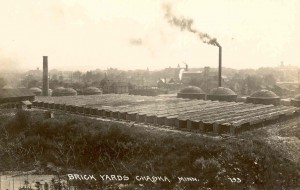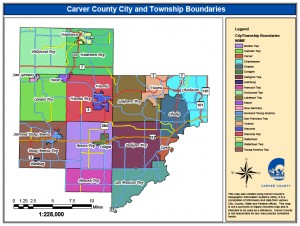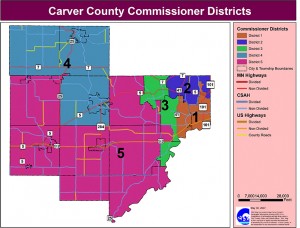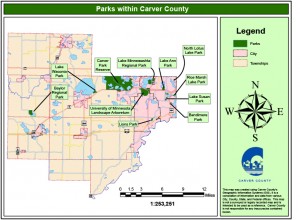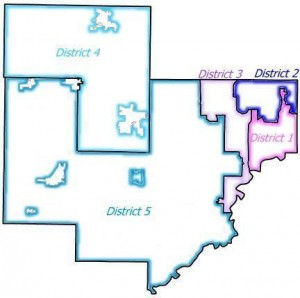The University of Minnesota Landscape Arboretum is the state’s largest, most diverse and complete horticultural site. The grounds have more than five thousand types of plants, including fruits, vegetables, bushes and flowers. Located about thirty minutes west of the Twin Cities, it is an amazing horticultural resource.
The history of the Landscape Arboretum begins with Peter Miller Gideon. He established a homestead and apple orchard on the shores of Lake Minnetonka in 1853. The orchard started with thirty apple varieties, but the harsh Minnesota winters and hot summers killed most. By his tenth year on the farm, in 1868, only one seedling survived. However, Gideon was determined. He sent his last eight dollars to Maine for more seeds. Gideon crossed the large apple seeds he received with a hardy local crab apple to create a new apple, the “Wealthy”. This fruit survived Minnesota’s extreme weather, and was the foundation for apple growing in Minnesota. The Wealthy’s success led to the Minnesota State Legislature’s approval of state-funded experimentation in breeding new fruit varieties.
In March 1878, the Minnesota State Horticultural Society, using state funds, started the Minnetonka Fruit Farm on 116 acres next to Gideon’s farm. Gideon was in charge of the Fruit Farm until his retirement in 1889. That farm was then sold, but new research opportunities had already begun. In 1883, the Minnesota State Horticultural Society began a series of research stations to create new varieties of fruits and vegetables.
In 1907, the Horticultural Society successfully petitioned for a new fruit breeding and testing farm to be part of the University of Minnesota’s Horticulture Department. The project was started on seventy-eight acres purchased five miles west of Excelsior, along current Highway 5. More land was bought in 1920 and 1931, for a total of 230 acres. Planting began with extra seeds and plants from the experiment stations and donations by farmers. By 1912, sixty-five acres were planted and thriving on the Fruit Breeding Farm.
The first new fruit variety, the Latham raspberry, was introduced by 1914. By 1923, twenty-nine new varieties were being enjoyed. Despite this early success, the farm faced yearly money and weather problems. Droughts, floods and extreme cold or heat caused problems for plants. Money problems were addressed by using Works Progress Administration workers during the Depression in the 1930s. Second, the farm collaborated with the U.S. Department of Agriculture (USDA) and the National Fruit Breeding Program in 1938. This partnership sent USDA field agents to work on the farm and money to pay for their labor part-time.
The Fruit Breeding Farm continued to grow and produce new hardier fruit varieties. Between 1919 and 1953, sixty-two new varieties came out. Among the better known were the “Fireside” and “Haralson” apples, the “Northstar” cherry, and the “Superior” plum. The “Haralson” has provided more income than any other Minnesota apple variety and in 2005 made up over fifty percent of all Minnesota apple production.
The farm had many leaders over the years. Between 1953 and 1970, Dr. Leon C. Snyder was in charge. He was interested in planting for landscapes. He first planted shrubs and trees around his home on the farm, and then later planted in the farm’s open fields. By 1954, Snyder started the Woody Landscape Breeding Program, with over 600 varieties of trees/shrubs planted by 1955. Snyder dreamed of an outdoor laboratory to create new plants and an outdoor living classroom for students. Soon after, in 1958, land was purchased by the University of Minnesota for a Landscape Arboretum. In 1967, the Fruit Breeding Farm became the Horticultural Research Center (HRC), growing more than just fruit. In 1987, the HRC and the Minnesota Landscape Arboretum were merged administratively as one program, or department, by the University of Minnesota.
Turning Point: The creation of the Horticultural Research Center in 1907 brought about renewed interest in horticultural research and sparked a booming apple industry in Minnesota, among others.
Chronology:
- 1853: Peter Miller Gideon establishes a farm and orchard on the shores of Lake Minnetonka.
- 1863: Only one seedling survives on Gideon’s farm.
- 1863-1864: Gideon sends his last eight dollars to Maine for seeds.
- 1868: The “Wealthy” apple variety is created by Gideon.
- March 1878: The Minnesota State Horticultural Society buys 116 acres next to Gideon’s farm and starts the Minnetonka Fruit Farm.
- 1878-1889: Gideon is placed in charge at the Minnetonka Fruit Farm.
- 1883: Minnesota State Horticultural Society begins a series of research stations to create new varieties of fruit and vegetables.
- 1889: Minnetonka Fruit Farm is sold.
- 1907: Minnesota State Horticultural Society petitions for a new fruit breeding and testing farm as part of University of Minnesota’s Horticultural Department. They buy seventy-eight acres of farmland.
- 1912: Sixty-five acres are planted and thriving on the Fruit Breeding Farm.
- 1914: The first new fruit variety, Latham raspberry, is introduced.
- 1923: Twenty-nine new fruit varieties are introduced by this time.
- 1930s: Works Progress Administration workers provide labor on the Fruit Breeding Farm.
- 1938: The United States Department of Agriculture (USDA) and National Fruit Breeding Program partner and send staff and money to support the Fruit Breeding Farm.
- 1919-1953: Sixty-two new fruit varieties are introduced by the Fruit Breeding Farm.
- 1953-1970: Dr. Leon C. Snyder is in charge of the Fruit Breeding Farm.
- 1954: Snyder begins the Woody Landscape Breeding Program.
- 1955: Six hundred varieties of trees/shrubs are planted.
- 1958: The Minnesota Landscape Arboretum is started with newly purchased land.
- 1967: The Fruit Breeding Farm becomes the Horticultural Research Center (HRC).
- 1987: The HRC and the Minnesota Landscape Arboretum formally merge.
Bibliography:
Adams, Forrest. “Arboretum Puts Focus on Sustainability”. Chanhassen Villager, October 4, 2007.
“Anniversary Celebration Scheduled”. Carver County Herald, July 7, 1988.
“Learning Center Celebrates 10th Year”. Chanhassen Villager, June 3, 1993.
“Minnesota Landscape Arboretum Brings Chanhassen Back to Nature”. Chanhassen Villager progress supplement, April 27, 1989.
Price, Susan Davis. Northern Treasure: The Minnesota Landscape Arboretum and Horticultural Research
Center. University of Minnesota. Afton, MN: Afton Historical Society Press, 2008.
Wermerskirchen, Sandy. “Minnesota Landscape Arboretum Combines Beauty With Research”. Carver County Herald, July 7, 1988.
Related Resources:
[Primary]
[Secondary]
Holcombe, Maj. R.I., editor. Compendium of History and Biography of Carver and Hennepin Counties, Minnesota. Henry Taylor and Company: Chicago, 1915.
Mihelich, Josephine. Andrew Peterson and the Scandia Story. Minneapolis, MN: Ford Johnson Graphics, 1984.
[Web]
“About Us”. University of Minnesota, Minnesota Landscape Arboretum. Accessed March 28, 2013. http://www.arboretum.umn.edu/aboutus.aspx
“Ten Plants That Changed Minnesota”. University of Minnesota, Minnesota Landscape Arboretum. Accessed March 28, 2013. http://www.arboretum.umn.edu/10plants.aspx
“Learn”. University of Minnesota, Minnesota Landscape Arboretum. Accessed March 28, 2013. http://www.arboretum.umn.edu/learn.aspx
Images/Audio/Video
This article and the images below can be viewed on mnopedia: http://www.mnopedia.org/place/university-minnesota-landscape-arboretum
Photograph Collection, Minnesota Landscape Arboretum, University of Minnesota Photographic print “Visitor Center Snyder Building 2” [Description]: An aerial view of the Visitor Center, Snyder building, and some of the grounds of the University of Minnesota Landscape Arboretum. Rights held by the Landscape Arboretum and University of Minnesota.
Photograph Collection, Minnesota Landscape Arboretum, University of Minnesota Photographic print “Early Arboretum Sign” [Description]: An earlier version of the entrance sign for the University of Minnesota Landscape Arboretum. Rights held by the Landscape Arboretum and University of Minnesota.
Photograph Collection, Minnesota Landscape Arboretum, University of Minnesota Photographic print “Fruit Breeding Farm” [Description]: An early scene from the Fruit Breeding farm, which became the Horticultural Research Center. Rights held by the Landscape Arboretum and University of Minnesota.
Photograph Collection, Minnesota Landscape Arboretum, University of Minnesota Photographic print “Leon Snyder” [Description]: A candid shot of leader of the Fruit Breeding Farm, Dr. Leon C. Snyder. Dr. Snyder was the leader who started the Woody Landscape Breeding Program, which would become the Landscape Arboretum. Rights held by the Landscape Arboretum and University of Minnesota.
“This article used with the permission of MNopedia, operated by the Minnesota Historical Society, under a Creative Commons License. No changes have been made to the article’s content.”

